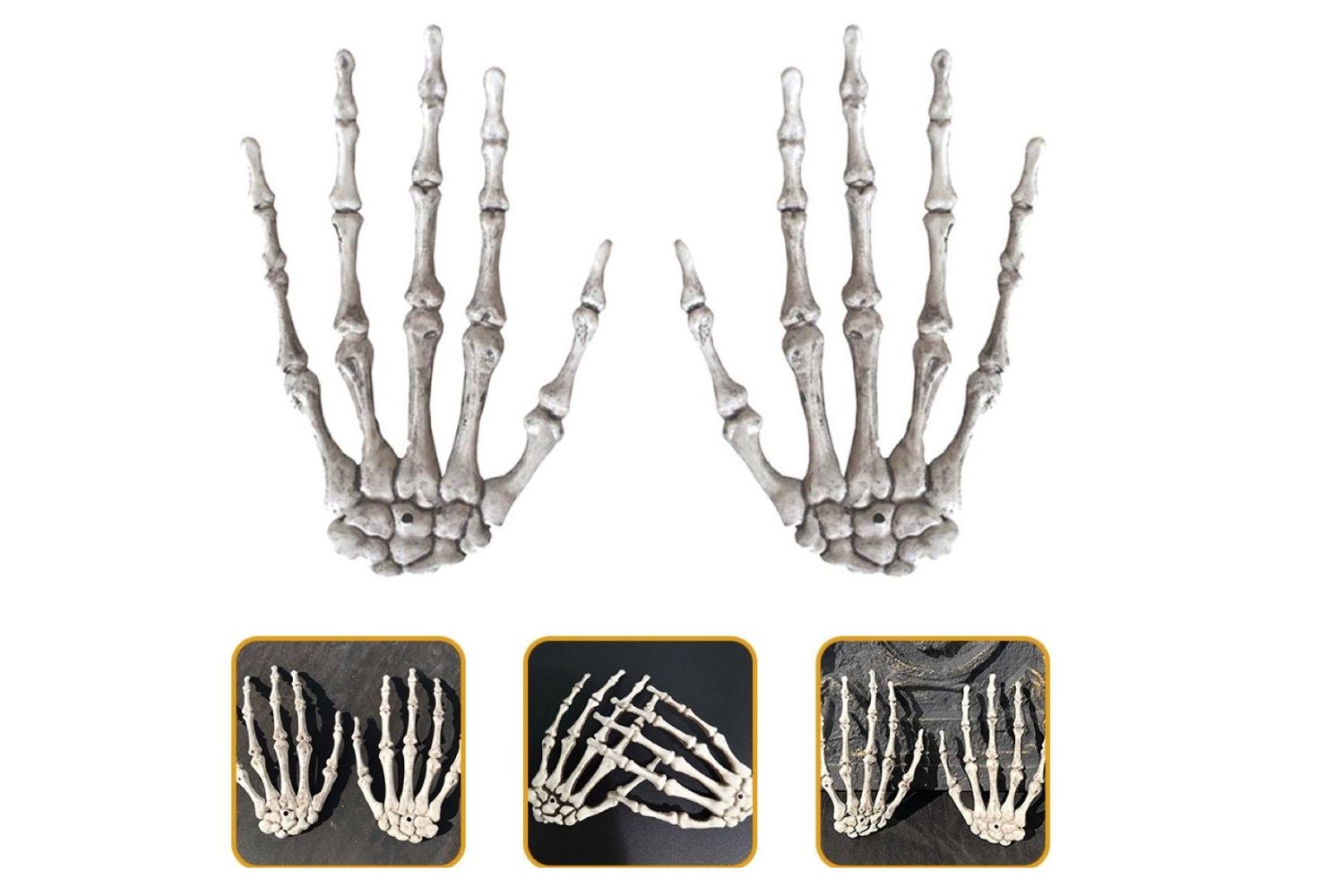
When we think of skeletons, we often picture them as whole bodies lying peacefully in graves or used as props on Halloween. However, there is something intriguing and mysterious about the skeletal structure of the hand. It is amazing to think about how this delicate and intricate collection of bones allows us to perform a multitude of tasks every day, from writing and typing to playing instruments and giving high fives.
In this article, we will delve into the fascinating world of the skeleton hand and uncover nine unbelievable facts that will leave you in awe of its complexity and functionality. From the tiny bones in our fingers to the joints that enable us to bend and flex, the skeleton hand is truly a marvel of biological engineering. So, get ready to be amazed as we explore the incredible secrets hidden within our very own skeletal hand!
Key Takeaways:
- The skeleton hand is a marvel of nature, with 27 bones allowing for a wide range of movements and impressive grip strength. It continues to grow and adapt, providing sensory feedback and the ability to recover from injuries.
- Our skeleton hand is not just a tool for physical tasks, but also a means of non-verbal communication and has played a crucial role in human evolution, paving the way for complex manual tasks and the advancement of civilizations throughout history.
Skeleton Hand Structure is Remarkably Complex
The skeletal structure of the hand is an intricate marvel of nature. Comprising of 27 bones divided into three major sections – the carpals (wrist bones), metacarpals (palm bones), and phalanges (finger bones) – it allows for a wide range of movements and flexibility.
Skeleton Hand Plays a Crucial Role in Grip Strength
The arrangement and interaction of the bones in the skeleton hand contribute to its impressive grip strength. The bones align in a way that enhances the mechanical advantage, enabling us to firmly grasp objects and perform various tasks with precision.
Skeleton Hand Bones Continue to Grow in Length
Contrary to popular belief, the bones in the skeleton hand do not stop growing after reaching adulthood. Instead, they continue to lengthen gradually throughout a person’s life. This phenomenon is known as appositional growth and allows the hand to adapt to physical changes and demands.
Skeleton Hand Contains Numerous Joints
The hand consists of multiple joints that facilitate its remarkable dexterity and range of motion. From the metacarpophalangeal joints that allow us to flex and extend our fingers, to the saddle joint called the first carpometacarpal joint, each joint in the hand serves a unique purpose in our day-to-day activities.
Skeleton Hand Provides Sensory Feedback
The skeleton hand is not only responsible for physical movement but also plays a vital role in our sense of touch. The fingers contain a high density of sensory receptors, enabling us to perceive textures, temperatures, and even pain through the intricate network of nerves present in the hand.
Skeleton Hand Can Recover from Injuries
Despite being delicate, the skeleton hand has an incredible ability to heal itself. Injuries such as fractures or dislocations can slowly regenerate and repair over time through the process of bone remodeling. This remarkable feature allows the hand to regain function and mobility after experiencing trauma.
Skeleton Hand Shape Varies Among Individuals
While the basic structure of the skeleton hand remains the same, there can be significant variations in size, shape, and proportion among individuals. Factors such as genetics, ethnicity, and lifestyle can influence the hand’s appearance and unique characteristics.
Skeleton Hand Helps in Non-Verbal Communication
Through gestures and hand movements, the skeleton hand can convey a wide range of non-verbal messages. From a friendly wave to intricate sign language, our hands play a crucial role in expressing emotions, ideas, and intentions, making them an essential tool for communication.
Skeleton Hand Has Remarkable Evolutionary Significance
The development of the skeleton hand played a crucial role in human evolution. It allowed our ancestors to grasp objects, create tools, and ultimately paved the way for complex manual tasks, contributing to the advancement of civilizations throughout history.
These 9 unbelievable facts about skeleton hand highlight the incredible complexity and functionality of this essential part of our anatomy. From its role in physical movements and sensory perception to its evolutionary significance, the skeleton hand continues to fascinate us with its remarkable capabilities.
Conclusion
In conclusion, the human skeleton is a fascinating and intricate system that supports our bodies and enables us to move. The skeletal system plays a crucial role in protecting our organs, manufacturing blood cells, and storing minerals. From their incredible flexibility to their ability to repair and regenerate, our skeleton’s hands are truly remarkable.The skeleton hand, with its complex structure and delicate bones, allows us to perform a wide range of fine motor skills and tasks. Its unique design and function make it one of the most incredible parts of the human body. By understanding its anatomy and how it works, we can appreciate the marvels of our skeletal system and the vital role it plays in our everyday lives.So next time you use your hands to write, create art, or even just perform simple tasks, take a moment to marvel at the extraordinary capabilities of the skeleton hand. It truly is a remarkable feat of nature.
FAQs
Q: How many bones are there in the human hand?
A: The human hand consists of 27 bones, including the eight carpal bones in the wrist, five metacarpal bones in the palm, and fourteen phalanges in the fingers.
Q: Can a broken hand bone heal on its own?
A: In most cases, a broken hand bone can heal on its own with the help of a splint or cast to immobilize the area. However, some severe fractures may require surgical intervention.
Q: Why do our fingers have different lengths?
A: The different lengths of our fingers allow for a more efficient grip and greater dexterity. The variation in finger length is determined by genetics and can vary from person to person.
Q: How does the skeletal system support and protect our organs?
A: The skeleton provides a rigid framework that supports and protects our internal organs. The ribcage, for example, safeguards the heart and lungs, while the skull protects the brain.
Q: Can we increase the flexibility of our hands?
A: Yes, regular stretching exercises can help improve the flexibility of the hands and fingers. Practicing activities such as yoga or hand exercises can enhance range of motion and joint flexibility.
Was this page helpful?
Our commitment to delivering trustworthy and engaging content is at the heart of what we do. Each fact on our site is contributed by real users like you, bringing a wealth of diverse insights and information. To ensure the highest standards of accuracy and reliability, our dedicated editors meticulously review each submission. This process guarantees that the facts we share are not only fascinating but also credible. Trust in our commitment to quality and authenticity as you explore and learn with us.


